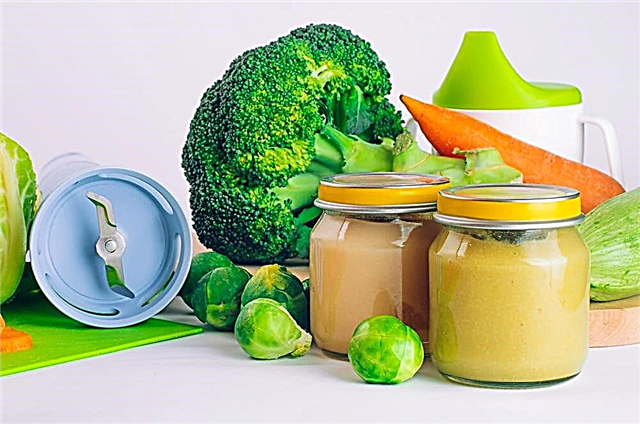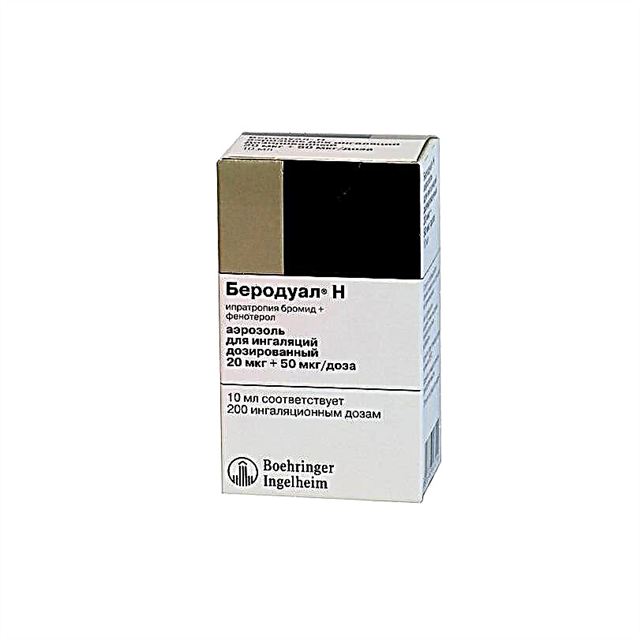A newborn is incredibly different from an adult, starting with the size of the calf and pumping up skills. Now he will actively grow, receiving energy, like everything else, from food. Until six months, he eats only formula or mother's milk, what and in what volume should a six-month-old baby eat?

The child eats
Features of the introduction of complementary foods for a half-year-old baby
With a newborn baby it's easy in terms of feeding. If he eats breast milk, then he is fed on demand. If the mixture is similar, but it is more difficult to predict the appetites of the toddler. The child grows, at the age of about 6 months, or six months, he is introduced to other food (WHO officially recommends starting complementary foods at this very childhood, but allows the possibility of its introduction from 4 months).
Acquaintance with food for babies begins with a vegetable or porridge. Moreover, everything should be in a state of puree. Vegetable is usually given from a jar, purchased, special mixtures are used for children's cereals. Parents can make such meals themselves, using a blender.
Important! A mother should understand that during the entire first year of life, a child should not eat anything other than milk or formula. They are the main food of a baby up to a year. All complementary foods are just a sample.

Doctor Komarovsky
For the correct combination of milk / formula and other food, doctors have developed a set of mandatory rules. For example, Dr. Komarovsky advises:
- Before 4 months, complementary foods are not needed.
- The tactics of complementary feeding are about the same, both on the IV and on the GV.
- The introduction of new products can only be started if the baby is healthy;
- Traveling is not a time for complementary foods, as are a couple of days before and after vaccinations;
- You need to start strictly little by little, introducing the product in 5-7 days. A teaspoon, two, then 25 grams, 50, 75, 100, 125, 150. This is the only way, even if the baby asks for supplements before the end of the input. In the first week they give zucchini, the third - broccoli, in the sixth they introduce pumpkin, etc.
- To get acquainted with new products, only one-component purees are needed, otherwise the allergy will not be recognized.
- Does your child not like the taste? It is not necessary to force him, it is better to postpone complementary feeding with this product for the time being.
- With the introduction of a new food product (of those that have already replaced one feeding), the new one gradually replaces the old one. For example, if the baby is already eating buckwheat porridge, his mother injects him with corn, then the amount of the first decreases in direct proportion to the increase in the portion of the second.
- The best time to introduce new food is in the morning. This will be the most effective way to respond to an allergy if it appears. Under no circumstances should you give a new product overnight.
Sooner or later, all young mothers have another question: how much should a baby eat at 6 months?
Feeding volumes
The new product does not immediately displace milk or formula. They need to be combined correctly.
When breastfeeding
By introducing a new product into the children's diet, gaining its volume so that one serving is obtained (for babies at the age of six months, it is about 100-180 grams), parents can replace one meal with them. For example, a full serving of porridge can be substituted for morning breastfeeding.

Breast-feeding
Until the required amount of the product is reached, until there is no component responsible for satiety, mother's milk should remain "a snack" for the crumb with each such meal. He himself will finish the amount he needs. For example, lunch: until meat is included in the diet, daytime breastfeeding cannot be replaced by vegetables alone. When the child already eats along with vegetable and meat purees, you can remove milk in this meal. The average daily amount of food that a baby eats at the age of six months is a kilogram, including feeding at night. Of these, about 700 gr. goes for milk, the remaining 300 - for porridge, vegetables.
Attention! All children are different, they eat in different ways. The baby's norm may be slightly more and slightly less than the indicated ones, this is not a reason for panic.
With artificial feeding
Children on IV, or artificial feeding, usually begin to feed earlier than "naturalists", at the age of about 4.5 months. Some pediatricians believe that formula is less valuable than breast milk, therefore it needs to be supplemented earlier (however, this is completely unnecessary given the current quality of infant formula, according to Komarovsky). Such crumbs are first introduced to cereals, at 4 months vegetables are not suitable for the first feeding.
Note! There is no need to add water to the baby with water on hot water. On artificial feeding, be sure to give him plain (boiled and cooled to 37 degrees) water between feedings from birth.
The principle of replacing it with IV is similar to replacing it with GW: first, the mixture is diluted as usual, while the baby is just trying the food. After the sample, they are supplemented with a bottle. Gradually, the volume of the formula for feeding decreases, most likely, the baby himself will stop drinking it, by the full portion (a reminder is 100-180 grams of food) it can be completely removed from one meal.
For example, the usual rate of the mixture that a child of six months old drinks at a time is 150-200 ml. Previously, he did not feed, only got acquainted with porridge. To reach its amount of 75 grams, the volume of the mixture is also reduced by half. That is, the amount of a single meal is always about the same.

The kid eats the mixture
The total amount of food for a bottle-fed baby, also taking into account nighttime snacks, is also a kilogram. How much adapted formula should a small child eat at 6 months? If complementary foods are introduced earlier, then about 600-500 grams. The rest is assigned to the share of complementary foods. If later - then, as in the case of GW, about 700-800 gr.
Important! In some cases related to baby food, it is imperative to consult a doctor. For example, if a child does not want to try vegetables or porridge (any), while eating little milk or mixture, is far behind the average weight, then you need to visit a pediatrician. Perhaps the crumbs have problems that make the process of absorbing food uncomfortable.
How many times half-year-olds eat
So, the total amount of feeding during the day (for 24 hours) is known - about a kilogram. This amount is spread over several meals. At six months, this is usually 5-6 times, and the sixth - at night.
It cannot be said that the amount of food is distributed evenly. In some receptions, the baby eats more, in some - less. The average baby food scheme looks like this:
- Snack, or early breakfast;
- Breakfast;
- Dinner;
- Snack;
- Dinner;
- Night feeding.
During the day, the breaks between meals are about 3 hours, at night the intervals increase.
Attention! Some children do not eat at night, it is normal if they themselves do not require food. Mom cannot independently cancel night feeds, just as it is not necessary to wake up the child for them on purpose.

Night feeding
How to diversify the children's menu
The age of six months marks a significant expansion of the diet for the child. It used to contain a mixture or milk. Now the baby is to some extent involved in the world of adults. Parents should understand that you can't just take any vegetable and give it to your baby. For the first feeding, the most hypoallergenic products are selected:
- Of vegetables, this is the Big Five, as their mothers jokingly call it: zucchini, broccoli, cauliflower, pumpkin, carrots.

Vegetables for the first feeding
Important! With the introduction of a single volume of vegetables in the child's diet of 75 grams. you need to start adding extra virgin olive oil to the puree at the rate of 1 tsp. for a full serving (150-180 gr.).
- From cereals (strictly dairy-free) - corn, buckwheat, rice.
- Fruits are not recommended to be introduced first. It is believed that the child will get used to the sweet taste, after which he will give up not so tasty vegetables. There is no strict contraindication. If the mother decides to give the baby a fruit, then let it be an apple or a banana.
- By six months, you can introduce egg yolk into the child's diet. Giving it more than three times a week is unacceptable. Protein is not given to the toddler, it is a strong allergen.
- If you want to pamper a child, it is permissible to give him a baby cookie for a sample (you need to take into account the age marking and treat it responsibly) or regular drying.
If a crumb of porridge does not want to eat, you can try to make it on a mixture, if it was previously introduced into the diet. As a rule, this helps to avoid whims, and the baby will calmly eat his portion.
Note! A breastfed baby does not need supplementation except in the heat. With the beginning of complementary feeding, even if it is one spoonful of vegetables, water must be given.

The child needs water
6 month old toddler learns different drinks:
- You can start giving him juices, but only diluted with water. For two parts of pure water, one part of the juice is taken: apple, pear. This is not recommended if the child has bloating problems. The introduction of juices into the diet should take place at least two weeks before the fruit purees.
- From 4 months on, crumbs are allowed to drink weak decoctions of fennel, lemon balm, mint, even more so by 6 months. You can buy ordinary herbs in bulk, you can mix in filter bags. For busy parents, baby food manufacturers have released granular herbal teas mildly sweetened with dextrose. Such products are produced by Hipp, Bebivita.
The main variety of the children's table is the new products themselves. The crumb should use them in mashed potatoes to avoid suffocation (the child is not yet able to eat in the same way as an adult, therefore it can be easier to choke).
A novelty in the menu of a baby who is just starting to feed can be a nibbler. This device is similar to a nipple, only its tongue is larger and has frequent perforations. You can put a piece of a product familiar to the child inside and give it to him. This will provide massage for children's gums, teach them how to chew. For the same purpose, coarse drying can be given without a nibbler.

This is what a nibbler looks like
Attention! All products already introduced into the child's diet can be combined.
Did you start complementary feeding earlier, about 4 months? By the norms, this is quite permissible (although it is undesirable, everything here remains at the discretion of the parents). Then the little one eats the following foods:
- Poultry - chicken and turkey;
- Dairy products in the form of cottage cheese. Sour milk mixture is allowed from six months.
- Prunes are added to the fruit.
There is more room for creativity:
- Soups are becoming available that contain all the products introduced. For example, chicken broth containing broccoli and pumpkin. Only such a dish needs to be passed through a blender.
- Fruit purees can be added to cereals;
- For dinner, you can also combine meat or poultry and vegetables, serve them in the form of mashed potatoes. By the way, this is how you can transfer your baby to a common table. Squash, cauliflower, broccoli and turkey stew can be enjoyed by both parents and their child.

The kid eats from the common table
- Desserts also become available to such a child. A baked apple (without cinnamon, of course), cottage cheese with mashed banana - why not a substitute for sweet?
Important! Neither salt nor pepper the food for the baby is allowed. Sugar is also extremely undesirable, at least up to a year.
To summarize, children who began to be fed at different times should eat the following foods:
- Complementary foods from 4 months: vegetable purees (broccoli, cauliflower, carrots, pumpkin, zucchini, potatoes), fruit purees (apple, pear, prunes, banana); meat purees (chicken, turkey, beef), yolk, cottage cheese without additives, dairy-free cereals (corn, buckwheat, rice), olive oil.
- Complementary foods from 5 months: vegetable purees (broccoli, cauliflower, carrots, pumpkin, zucchini), fruit purees (apple, banana), meat purees (chicken), yolk, dairy-free cereals (corn, buckwheat, rice), olive oil.
- Complementary foods from 6 months: vegetable purees (broccoli, cauliflower, zucchini), dairy-free cereals (corn, buckwheat), yolk, olive oil.
The rest (fermented milk products for children, cookies, juices, teas) is left at the discretion of the parents. No matter how the baby is fed, at six months at least half of the food he consumes should be milk or an adapted formula.
Sample menu for a baby 6 months
Approximate menu of crumbs for the day
| Meal time | Name of meal | Dishes (complementary foods from 4 months) | Approximate volume | Dishes (complementary foods from 6 months) | Approximate volume |
|---|---|---|---|---|---|
| 06.00 | Snack | Breast milk formula | 200 g | Breast milk formula | 200 gr. |
| 10.00 | Breakfast | Porridge with fruit puree | 150 gr. + 50 gr. | Dairy-free porridge | 150-180 gr. |
| 13.00 | Dinner | Vegetable soup in broth | 200 g | Vegetable puree + yolk + breast milk or formula | 100 g + 5 gr. + 100 gr. |
| 16.00 | Snack | Curd + fermented milk mixture | 100gr. + 100-120 gr. | Breast milk or formula | 100-200 gr. |
| 19.00 | Dinner | Breast milk formula | 200 g | Breast milk formula | 150-200 gr. |
| 01.00 | Snack | Breast milk or formula | 200 g | Breast milk or formula | 150-200 gr. |
To summarize, it can be recalled that the main food of any six-month-old child is mother's milk or an adapted formula. It is them that the baby should eat first of all, as much as is enough for him to saturate. All other products are just an introduction and nothing more.



